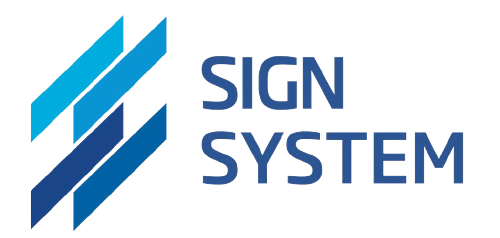Generative AI and Future GAN, GPT-3, DALL E 2, and whats next by Luhui Hu Towards AI
What is Generative AI? Definition & Examples
In addition to automating marketing, AI-powered automation can be used to streamline processes across the entire e-commerce business. For example, by automating inventory management or shipping and fulfillment, businesses can reduce manual errors and improve efficiency. This not only improves the customer experience, but also helps businesses reduce costs and increase profitability.
- Humans are still required to select the most appropriate generative AI model for the task at hand, aggregate and pre-process training data and evaluate the AI model’s output.
- Generative AI can create realistic and dynamic NPC behavior, such as enemy AI and NPC interactions.
- Then, various algorithms generate new content according to what the prompt was asking for.
- For example, a chatbot might use generative AI to create responses but rely on NLP for understanding user queries.
Ongoing research aims to improve the performance, efficiency, and controllability of generative models. Innovations in architectures, regularization techniques, and training methods are expected to shape the future of generative modeling. VAEs have applications in diverse areas, including image generation, anomaly detection, and data compression.
Generative Adversarial Networks (GANs)
Learning from large datasets, these models can refine their outputs through iterative training processes. The model analyzes the relationships within given data, effectively gaining knowledge from the provided examples. By adjusting their parameters and minimizing the difference between desired and generated outputs, generative AI models can continually improve their ability to generate high-quality, contextually relevant content.
Traditionally, copyright laws have been designed to protect the work of human creators. By breaking down how generative AI works into its core components, the intricate yet methodical process by which these models function becomes clear. With a strong grasp of the mechanics, you are better positioned to make informed decisions about when and how to use this transformative technology.

ChatGPT-3 and Google Bard are examples of transformer-based generative AI models. Training generative AI models to create accurate outputs also requires large amounts of high-quality data. If training data is biased or incomplete, the models may generate content that is inaccurate (that’s why generative AI design tools have a particularly hard time recreating human hands) or not useful. During training, Yakov Livshits the generator tries to create data that can trick the discriminator network into thinking it’s real. This “adversarial” process will continue until the generator can produce data that is totally indistinguishable from real data in the training set. This process helps both networks improve at their respective tasks, which ultimately results in more realistic and higher-quality generated data.
Is Generative AI Art Actually Art, or Randomly Generated Content?
This technology allows designers and artists to experience their creations in real-time with minimal effort while also providing them more opportunity to experiment without hindrance. By combining the power of machine learning with medical imaging technologies, such as CT and MRI scans, generative AI algorithms can accelerate precision in medical imaging with improved results. It can also be used to generate text that is specifically designed to have a certain sentiment.
Generative AI: Get used to it—and use with caution – CUNA News
Generative AI: Get used to it—and use with caution.
Posted: Tue, 05 Sep 2023 07:00:00 GMT [source]
However, there are various hybrids, extensions, and modifications of the above models. There are specialized different unique models designed for niche applications or specific data types. Integrating cutting-edge Generative AI models into your business can revolutionize its potential. RedBlink’s Artificial Intelligence Services & Solutions can harness the power of AI to unlock innovative solutions tailored to your specific business needs.
E. Transformer-based model
Yakov Livshits
Founder of the DevEducation project
A prolific businessman and investor, and the founder of several large companies in Israel, the USA and the UAE, Yakov’s corporation comprises over 2,000 employees all over the world. He graduated from the University of Oxford in the UK and Technion in Israel, before moving on to study complex systems science at NECSI in the USA. Yakov has a Masters in Software Development.
AI-focused platforms like arXiv and Medium also publish regular articles that discuss the latest advancements. The model essentially “generates” a prediction of how a protein will fold, thereby shedding light on its functions and interactions. Each has its own set of advantages and drawbacks, so consider what will work best for your specific needs. The aim is to minimize the difference between its output and the expected outcome, enhancing its performance over time. As we consider the future prospects, knowing the key milestones and contributors helps us gauge the trajectory of this technology, preparing us for the incredible advancements yet to come.
Then, the decoder reconstructs the original data from the compressed representation, creating new samples that share similar characteristics with the original data. Artbreeder – This platform uses genetic algorithms and deep learning to create images of imaginary offspring. Arguably, because machine learning and deep learning are inherently focused on generative processes, they can be considered types of generative AI, too. Generative AI is an exciting new technology with potentially endless possibilities that will transform the way we live and work. Machine learning is the ability to train computer software to make predictions based on data.
Bard is another interesting generative AI tool that focuses on helping users generate creative and engaging written content. As the field of artificial intelligence continues to evolve, generative AI is increasingly being used by businesses, researchers, and creators to drive innovation in a variety of fields. From e-commerce to entertainment, the possibilities of generative AI are seemingly endless. With numbers like that in mind, companies have raced to adopt marketing technologies that will allow them to create the tailored online experiences that customers so obviously want. The benefits of generative AI will allow companies to dive even deeper with e-commerce personalization and automate more of the customer experience. When generative AI is used as a productivity tool to enhance human creativity, it can be categorized as a type of augmented artificial intelligence.

By analyzing this data, generative AI tools can help you identify your target audience’s preferences, interests, and pain points, which can inform your marketing messaging, content, and product development. Conversational tools can be trained to recognize and respond to common customer complaints, such as issues with product quality, shipping delays, or billing errors. When a customer sends a message with a complaint, the tool can analyze the message and provide a response that addresses the customer’s concerns and offers potential solutions. Generative AI models can generate personalized insurance policies based on the specific needs and circumstances of each customer.
Examples of Companies Using Generative AI
It will significantly boost productivity among software coders by automating code writing and rapidly converting one programming language to another. And in time, it will support enterprise governance and information security, protecting against fraud and improving regulatory compliance. The benefits of generative AI include faster product development, enhanced customer experience and improved employee productivity, but the specifics depend on the use case. End users should be realistic about the value they are looking to achieve, especially when using a service as is, which has major limitations. Generative AI creates artifacts that can be inaccurate or biased, making human validation essential and potentially limiting the time it saves workers.
Certain news agencies have begun experimenting with generative AI for drafting news articles, especially for reporting on financial earnings or sports scores. These models generate news stories based on structured data, offering a quick way to produce accurate and relevant content. Once you’re satisfied with the model’s performance, think about its practical applications. Whether you’re interested in content creation, scientific research, or business solutions, there will be unique challenges and opportunities.

Unsurprisingly, a lot of this is being done on GitHub—take the Stable Diffusion model, for example. By developing libraries, frameworks, and tools, open source communities have enabled developers to build, experiment, and collaborate on generative Yakov Livshits AI models while bypassing the typical financial barriers. This has also helped democratize AI by making it accessible to individuals and small businesses who might not have the resources to develop their own proprietary models.
